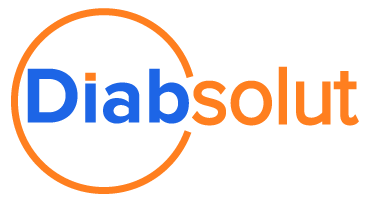Creating a Personalized Approach to Student Interactions in Higher Ed
 Think about the number of times a student needs to provide their ID number from the time one is assigned during recruitment, through to graduation. It adds up. The issue with this is that it can make students feel like their student ID number is all they are to your Higher Ed organization. So, how do you get past that? How do you create a more personalized approach to student interactions while managing a student’s needs, accurately keeping records, etc.?
Think about the number of times a student needs to provide their ID number from the time one is assigned during recruitment, through to graduation. It adds up. The issue with this is that it can make students feel like their student ID number is all they are to your Higher Ed organization. So, how do you get past that? How do you create a more personalized approach to student interactions while managing a student’s needs, accurately keeping records, etc.?
Get Technical
Using technology specifically geared towards Higher Education is the most value-driven approach, as it can not only improve and personalize student interactions, it delivers better data management and helps streamline processes for both students and employees.
- The easier things are for students, and the more seamless their experiences are, the less they’ll feel like just another number.
- With better data management you achieve a more complete picture of a student’s journey; add to that the ability to automate certain processes based on the student’s needs and that student’s experience will become more, and more personalized with every interaction.
Solution Tips and Examples
If you think a technical solution for more personalized student interactions might be right for your institution, start with a process review (you can use the questions below as a starting point). The solution examples and benefits listed below are generalized; for specific use case examples, please contact us or take a look at our success stories.
Our organization recommends Salesforce and its partners when working with our clients, which is why you’ll see their technology mentioned in the examples below.
- What student-facing tasks are taking up the most time and effort for your administration, faculty, and staff; are duplicate efforts ever required by either employees or students to successfully resolve tasks?
- Solution Example:
- Education Cloud can be implemented to centralize information, eliminate duplicates, reduce human error, and automate and improve processes—as well as provide time-saving tools and UI.
- Integration with other systems would allow for access to more complete data.
- Admissions Connect could be implemented to streamline admissions and recruitment efforts.
- Education Cloud can be implemented to centralize information, eliminate duplicates, reduce human error, and automate and improve processes—as well as provide time-saving tools and UI.
- Impact: This solution would result in free time to personalize student interactions; duplicate elimination and a reduction of human error help make students feel more valued.
- How many steps and interactions are involved for your students to resolve tasks, find information, communicate issues, etc.; how do your students want to communicate, what are their actual needs, and what could you be providing to them before they need to ask?
- Solution Example:
- Student Success Hub can provide a single location for information, options for virtual interaction, and campus news.
- Integration of communication sources, such as email, phone, SMS, and social media—would provide continuity and give students more choices.
- Marketing Cloud can be implemented to improve engagement efforts and provide personalized outreach.
- Student Success Hub can provide a single location for information, options for virtual interaction, and campus news.
- Impact: One place for everything from paying tuition to looking up lab hours, scheduling classes to scheduling appointments, improves ease-of-use; and with every digital interaction, more data is provided to tailor that student’s experience.
- What balance of automation vs. hands-on interaction is preferable, and where will hands-on interaction be most beneficial?
- Solution Example:
- Education Cloud can be implemented and configured to automate interactions based on data and prompts, or use prompts to initiate 1:1 interaction when certain criteria are met.
- Service Cloud allows for better student support via improved case management.
- Impact: Getting a student the help they need before that help becomes critical, or supporting them appropriately while they’re struggling, not only helps with retention rates, it lets students know they matter.
Next Steps
We highly recommend looking for a solution that works best for your short- and long-term goals can grow with your organization, and has flexible configuration options, to avoid expensive custom coding and achieve a better ROI.
When you’ve made a decision, be sure your integration partner understands the technology, Higher Education, and your individual organization’s end-user needs, including both students and employees.
If you’re looking into improving your own institution’s student experience, contact us. For more Higher Ed content read our blog on admissions and recruitment, or take a look at our Higher Ed Summit takeaways.
Search
Trending Topics
- Modernizing Government Utility Operations with Salesforce Field Service
- PSA vs Project Management Tools: Understanding the Key Differences
- The Role of Technology in Running an Efficient Customer Success Organization
- Maximizing Efficiency with Certinia Services Estimator: Unifying Software and Services Estimates for Enterprises
- How AMS Transforms PSA Break-Fix Management for Faster Resolutions
- How to Build Enhancements in Certinia PSA Without Overburdening Your Team
- Optimizing Certinia PSA: Addressing Backlogs, Enhancements, and Common Challenges
- Why Regular Health Checks Are Critical for Long-Term Success in Field Service Technology
- Professional Services Challenges in Today’s Business Landscape
- How Managed Services Drive Success – The Diabsolut Advantage
